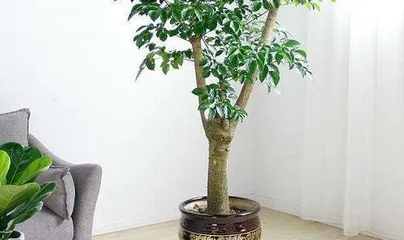The Happy Tree, as a cold-hardy and adaptable plant, is very popular in homes. However, many people do not know how to plant and care for it. This article will detail the planting and care techniques for the Happy Tree, hoping to help readers better care for this "tree of happiness".

Selecting a Quality Happy Tree
When selecting a Happy Tree, choose a seedling that is robust and free from pests and diseases to ensure it grows healthily with glossy leaves.
Proper Soil and Nutrition
Happy trees need fertile, loose, well-ventilated, and moist soil. When planting a Happy Tree, it is best to mix an appropriate amount of organic fertilizer into the soil to meet its nutritional needs.

Choosing the Right Planting Location
Happy trees prefer a sunny and humid environment, so a place with plenty of sunlight and good drainage should be chosen for planting.
Watering the Happy Tree
When the Happy Tree is growing, attention should be paid to maintaining proper humidity, avoiding excessive dryness or moisture. Generally, watering once in the morning and once in the evening is sufficient.
Suitable Temperature Environment
Happy trees have a wide temperature adaptation range, but they are affected by both high and low temperatures. To maintain its growth, the temperature should be kept between 15-25°C.

Pruning in a Timely Manner
During its growth, the Happy Tree will produce many branches and leaves. If not pruned in time, it can easily affect its normal growth and aesthetics. Regular pruning should be done during the growing period.
Pest and Disease Control
During its growth, Happy trees are susceptible to pests and diseases such as aphids and powdery mildew. To prevent and control these, appropriate pesticides can be used.
Timely Fertilization
Happy trees need a lot of nutrients during their growing period, so regular fertilization is necessary. The best times for fertilization are spring and autumn, and organic or compound fertilizers can be used.
Correct Transplanting Method
When transplanting, attention should be paid to keeping the root system intact, avoiding damage to the roots of the Happy Tree, and choosing the right time for transplantation.
Pay Attention to Irrigation Methods
There are various irrigation methods for Happy trees, such as drip irrigation, sprinkler irrigation, etc. When choosing an irrigation method, a suitable method should be selected based on the actual situation.
Maintain Ventilation and Air Permeability
During its growth, Happy trees need sufficient oxygen and carbon dioxide, so when planting indoors, ventilation and air permeability should be maintained.
Loves a Light-Filled Environment
Happy trees love light, so if planted indoors, they should be placed in a location with plenty of light.
Avoid Overwatering
Happy trees are not tolerant of water, and excessive watering can damage their roots. Overwatering should be avoided when watering.
Strengthen Pest and Disease Control
Happy trees are susceptible to pests and diseases, so pest and disease control should be strengthened to avoid losses.
Correct Winter Care
Happy trees need special care in winter. They can be placed in a greenhouse or indoors to maintain suitable temperature and humidity.
As a highly adaptable and easy-to-care-for plant, the Happy Tree is very popular in homes. Correct planting and care techniques can help the Happy Tree grow better, flower, and bear fruit, bringing us more happiness and joy.